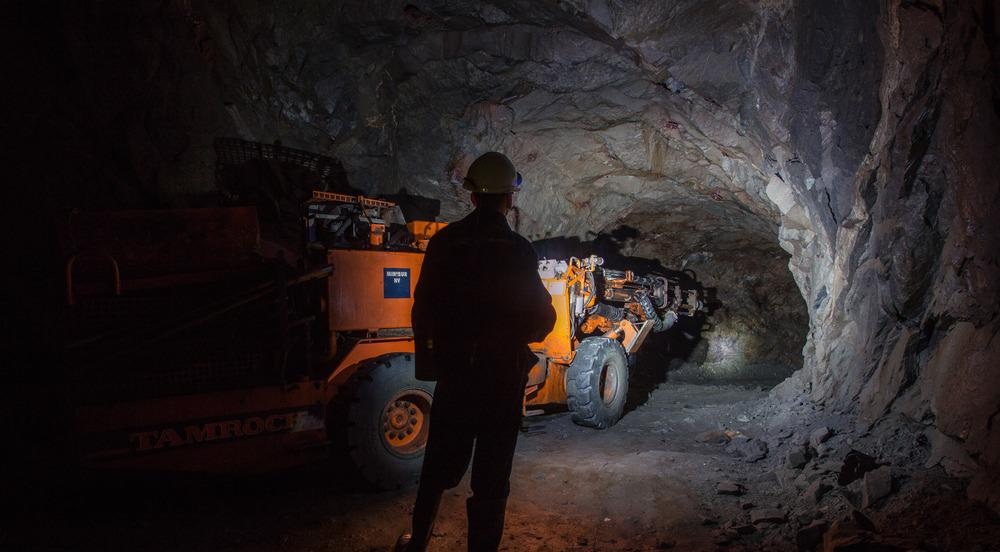This article focuses on the types of mining and risks associated with it, eventually focusing on the environmental effects. The article then focuses on the Mining Guidance System (MGS) developed by AMT along with its features and advantages.

Image Credit: Mishainik/Shutterstock.com
Since the dawn of the human era, mining has provided us with useful materials such as coal, iron, and gold which have advanced human civilization by a millennium. The earliest mining processes involved the use of sharp tools and laborious digging to mine basic minerals such as flint. In contrast, mining today is heavily industrialized, with different types of mining being introduced for different purposes.
The two different types of mining are surface mining and underground mining. Initially, surface mining activities were performed and included ground blasting activities. This led to blasting the earth’s surface followed by the removal of ores so that refineries can perform the mineral extraction process. In underground mining, drillers dig deep mines into the earth’s surface to extract the ore.
The Dangers of Mining
Despite the advancement in mining, it is still considered a dangerous profession. Mining for long hours underground leads to lung disease due to the dust particles accumulating in the lungs. Because of this, black lung disease is prominent amongst people working in mines. This disease leads to lasting effects on miners which often leads to death. Surface mining involves blasting tunnels that can cause miners to be trapped underground.
The environmental effects of mining are also immense. Mining creates acidic water pollution which sulfides the nearby soil, making it unusable for farming purposes. The waste generated by mines also leads to water pollution and destroys the local flora and fauna of the site. Mercury, which is generated through mining processes, also leads to poisoning, which, if mixed with drinking water, can lead to mercury poisoning among people and wildlife.
AMT’s Mining Guidance System (MGS)
As mining causes a lot of damage to human life and the environment, companies worldwide are focusing on reducing the damage by using smart technologies.
AMT has continuously improved its mining capabilities since the 1980s by developing accurate sensors for mining operations. One such technology is the Mining Guidance System (MGS), which has military-grade sensors and data processing. The system finds the accurate position and attitude for digging machines, ensuring that maximum safety and accuracy are obtained without compromising mineral yield.
The technology has a centralized system that incorporates data processing algorithms for navigation and other automation tasks. The mining guidance system can be controlled externally using a PLC-compatible Ethernet/IP data interface and works in harsh environments with an IP67 rating.
For data gathering and analysis processes, the MGS consists of an accurate 3D position and pose estimation algorithm that monitors the entire mining process. The algorithm accepts user-defined data for geo-referenced logging and post-analysis activities. A geo-referenced and fully navigated dataset is obtained, providing the ability for the mining equipment to drill down to a specific point location.
All the data is remotely stored into secure cloud servers for backup so that it can be accessed for visualization. Therefore, all mining activities can be remotely accessed and routine summary reports are generated. These can be provided to the customers in an event of performance issues.
AMT’s unique service model does not charge per piece of equipment. Instead, it charges an annual fee which, besides providing equipment, hardware, and firmware, offers hardware replacement in case of failure, remote data and system monitoring, and a technology license.
Before setting up the equipment, the company initially discusses options with the customer and visits the mining location to understand the system deployment process. Once an accurate understanding of the area has been developed, the system is deployed at the location.
Once the system is well deployed and running, ongoing remote support is provided, helping to actively monitor the systems and provide a detailed analysis and feedback of the monitoring activities, along with monitoring of the overall equipment health of the system. If any hardware needs updating, it is updated without any extra cost. Customers also receive an option to scale their deployments up or down so that a cost-effective mining procedure is obtained.
The Future of Safer and Efficient Mining
Mining has always been a hazardous yet rewarding industry and with technologies being developed that have the potential to reduce the risk factors associated with it, the future looks promising.
References and Further Reading
Creative Safety Supply. (n.d.) What are risks associated with mining? [Online] Available at: https://www.creativesafetysupply.com/qa/mining-safety/risks-associated-with-mining
National Geographic Society (2020) Mining. [Online] Available at: https://www.nationalgeographic.org/encyclopedia/mining/
Mining Monthly (2005) AMT guides US coal mines. [Online] Available at: https://www.miningmonthly.com/markets/international-coal-news/1277459/amt-guides-us-coal-mines
Applied Mining Tech. (n.d.) [Online] Available at: https://appliedmining.tech/
Disclaimer: The views expressed here are those of the author expressed in their private capacity and do not necessarily represent the views of AZoM.com Limited T/A AZoNetwork the owner and operator of this website. This disclaimer forms part of the Terms and conditions of use of this website.